May Swenson may
not be known by most folks in Logan, Utah, the town where
she grew up riding stick horses among the poplars at the
bottom of Old Main Hill, scrubbing floors for her
large Mormon family, and writing in her adolescent
diary. Nor does Utah take much notice of Swenson, who died
in Delaware in 1989. And yet, her portrait will soon hang in
the National Portrait Gallery of the Smithsonian
Institution, a distinction shared by Brigham Young and
Robert Leroy Parker, aka Butch Cassidy, among other
Utahns.
"It's a real
honor for the state as well as for May," says Suzzanne
Bigelow of Salt Lake City, coauthor of the 1996 book May
Swenson, A Poet's Life in Photos. It also is
recognition that Swenson, though largely unknown in her home
town and state, is nonetheless regarded as a
significant 20th century American poet. "Within the
community of established poets, she is revered," says
Michael Spooner, director of Utah State University
Press, which has published three books about Swenson and is
preparing a collection of essays about her work.
Spooner, English
professor Paul Crumbley, and several graduate students
are involved in the May Swenson Project to make the Cache
Valley native better known. USU has been been
sponsoring an annual poetry contest in her name, had a
symposium last year, established a May Swenson room in
the English department, and plans another in the library now
under construction. Swenson's champions also have
asked Logan to erect a sign at the southern entrance
to the northern Utah city, denoting it as May
Swenson's birthplace.
Having her
portrait in the National Portrait Gallery can only help
bring Swenson more respect, says Crumbley. The 1960
portrait, in pastels and on paper, is by gay artist
Beauford Delaney, a friend of Swenson's. The National
Portrait Gallery bought it from the poet's literary estate
in May. "She's obscure. I think that we can change
that," says Crumbley.
Swenson was born
in Logan in May 1913, the eldest of 10 children of Dan
Arthur and Margaret Swenson, converts to the Church of Jesus
Christ of Latter-day Saints who immigrated from Sweden
to Utah. Her father taught woodworking at Utah
Agricultural College, which became Utah State
University, and kept fruit trees and a huge garden on the
family's two acres just west of campus. He also was a
writer, and read to his children at the kitchen table
at night. Swenson's mother was quiet and hardworking
and relied on Swenson to help manage the brood of children
who came after her and to keep house. A younger
sister, Ruth Eyre of Logan, remembers Swenson
entertaining her young charges with impromptu stories,
including one about how many shoes a centipede would
need. "She told us that story as she was scrubbing the
kitchen floor," Eyre recalls.
After graduating
from USU, Swenson worked briefly as a reporter for the
Deseret News in Salt Lake City. At 22, she
borrowed $200 from her dad for a trip to New York City.
Thereafter, she made only occasional visits back to
Logan. She had hoped to be a newspaper writer but had
to settle for odd jobs that barely paid the rent on a
series of small apartments. At night, she wrote poetry.
After dozens of rejections, she was finally published
in The Saturday Review of Literature, 13 years
after she arrived in New York.
Though she
continued to work at secretarial jobs, Swenson scrimped so
she could take long writing breaks, including several
at artists' colonies, according to her partner of 25
years, Rozanne Knudson. By the time Swenson died of a
heart attack brought on by asthma and high blood
pressure at age 76, she had published 11 volumes of poetry
and had been awarded many top cultural honors, such as
the MacArthur Foundation Fellowship worth $380,000.
She was a chancellor for the Academy of American
Poets.
Along the way
Swenson stopped practicing the Mormon religion of her
youth, once explaining that she couldn't have faith in what
she couldn't see. She loved the music but was not a
believer. She also was bothered by the discrepancy in
the roles of men and women in the church and all of
society, says Knudson, executor of Swenson's estate and an
author herself. Swenson remained devoted to her
parents--they visited her twice in Greenwich
Village as they traveled to and from Sweden for a Mormon
mission--and she and her siblings were close. She
shared her MacArthur prize money with her brothers,
sisters, nieces, and nephews.
Swenson's
obscurity, says Spooner at USU, surely has to do with
poetry's small place in American society. "People just
don't know poetry." His own university once overlooked
opportunities to put the spotlight on its
distinguished graduate. Though USU granted Swenson an
honorary doctorate in 1987 and earlier had her teach a
summer workshop, the university demolished the home
where she was raised and a former curator, now
deceased, rebuffed an offer for the university to keep some
of her papers. Washington University in St. Louis,
instead, has 5,000 of her letters and working papers.
Utah's other universities did not invite Swenson for
workshops or readings, although she crisscrossed the
country, visiting college campuses for such occasions.
Knudson believes
there are reasons Utahns, unlike easterners, do not know
Swenson and her work. Poetry is about comfort, and Mormons,
she says, find comfort in their own scriptures and
inspirational writing rather than in poetry. Knudson
was raised LDS in Virginia and was educated at Brigham
Young University in Provo. Though Swenson's siblings adored
her, they have been reserved about publicly trumpeting
her poetic genius, says Knudson. Not only did Swenson
drink alcohol and smoke cigarettes for much of her
life--both proscribed by the LDS Church--she was
a lesbian. Of all the nieces and nephews, not one has
May's name, Knudson notes.
Margaret Woodbury
of Provo, who spent her 18th summer with Swenson, her
older sister, in Manhattan, says the family and May had an
understanding. "She allowed people to be who they were
and we allowed her to be who she was." Crumbley, the
USU English professor at the helm of the May Swenson
Project, says Swenson had no use for labels. She wasn't a
lesbian poet. She wasn't a New York poet. She wasn't a
Western poet. Though she wrote often about the
Atlantic Ocean, which she loved, she also wrote about
the mountains of the West. "She would not be
pigeonholed," says Spooner. "She was interested in all of
life."
One of the most
remarkable aspects of Swenson's 900-poem legacy is its
breadth. She wrote about nature and about space travel and
science, often employing humor and irony. Her poetry,
though often poignant, was light rather than dark. Ted
Kooser, the current U.S. poet laureate, says Swenson
had a strong influence on him as a young poet. "It seemed to
me she could do anything, could write well in any form, in
any mood, and the poems were not only virtuoso
performances but rich with life and feeling," he wrote
in an e-mail to The Salt Lake Tribune.
Wendy Wick
Reaves, curator of prints and drawings at the National
Portrait Gallery in Washington, says the gallery was
thrilled to buy the 18-by-24-inch portrait of Swenson.
The museum has been closed for renovation since early
2000 and won't reopen until July 4, 2006. The
reopening exhibits are already scheduled, so Swenson's
portrait will have to be displayed later. Swenson will
be the 21st Utahn in the gallery, either as a portrait
subject or artist. "She isn't as well-known as
Marianne Moore or Elizabeth Bishop, but she really does rank
with them in terms of 20th century poetry," says
Reaves. "She was really very, very influential."
(Kristen Moulton, via AP)





























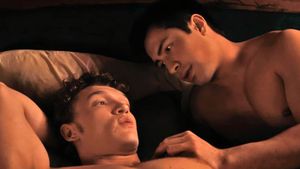
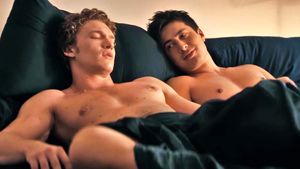

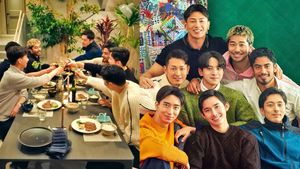












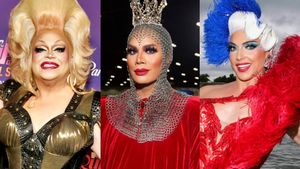





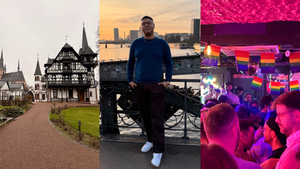







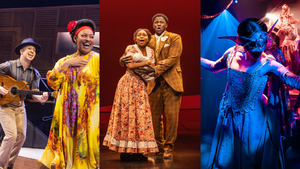



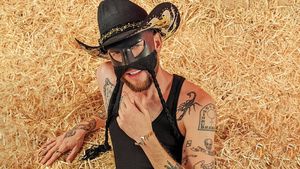




Charlie Kirk DID say stoning gay people was the 'perfect law' — and these other heinous quotes